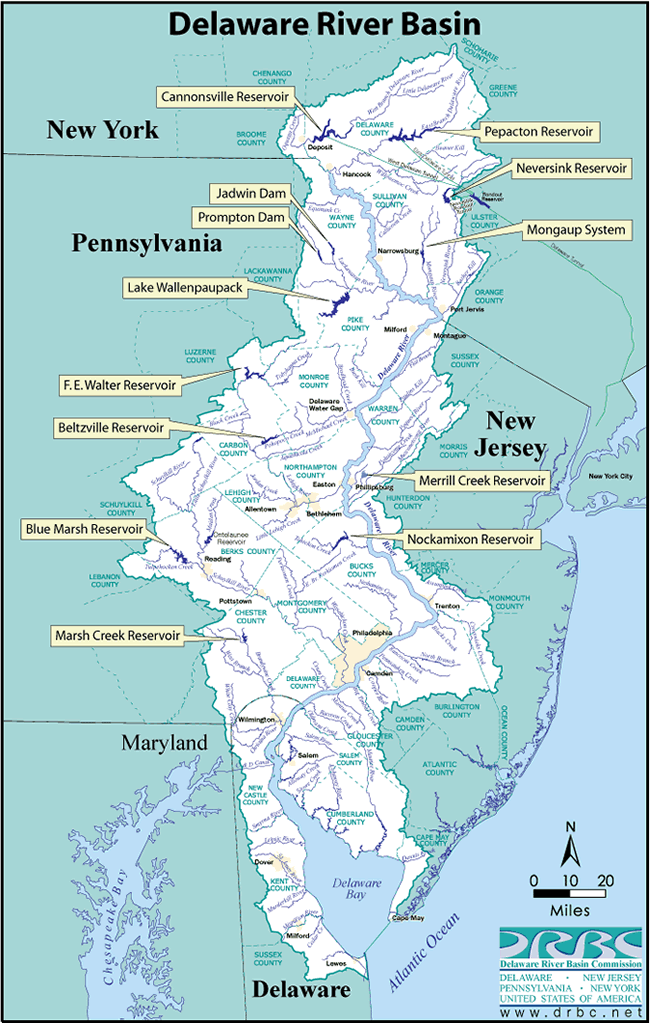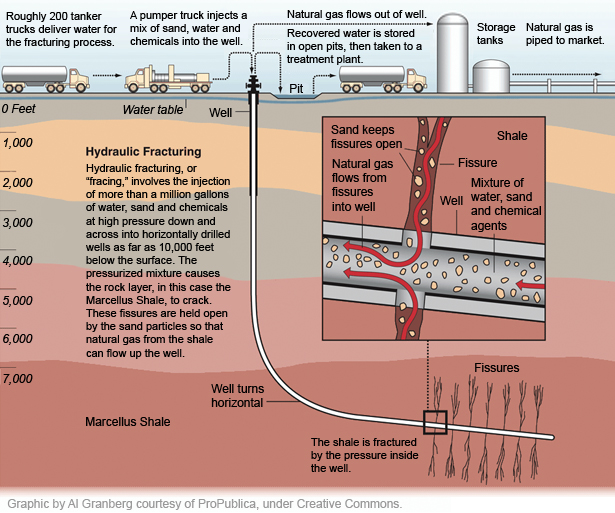Environmentalists Support Fracking But With Important Reservations
By admin on January 24, 2014
 It is necessary that natural gas be substituted for coal and oil as an energy source if the world is to have any chance of avoiding runaway greenhouse gas (“GHG”) emissions, particularly from the developing world.
It is necessary that natural gas be substituted for coal and oil as an energy source if the world is to have any chance of avoiding runaway greenhouse gas (“GHG”) emissions, particularly from the developing world.
At present, it is unrealistic to expect renewable energy sources (solar, wind and geothermal) to serve as a foundation for national energy policy. In the United States, even with the best use of conservation, energy efficiency and renewables, the combination of these various “alternatives” will not become a substitute for fossil fuels for a very long time.
In a thoughtful article in the New York Law Journal on January 2, 2014, titled “Countries Approach Fracking With Interest and Caution,” Stephen L. Kass, makes the case that natural gas from hydraulic fracturing should be an important component of a comprehensive energy strategy, both in the United States and abroad. According to Kass, fracking is attractive to: (1) economists seeking to stimulate development; (2) national security officials seeking independence from unreliable oil suppliers; and (3) environmentalists who seek to avoid runaway GHG emissions, particularly from developing countries.
In the United States, fracking now accounts for a staggering 25% of domestic natural gas (a figure expected to rise to 50% by 2035). In addition to lowering energy costs, according to Kass, fracking is widely credited with reducing U.S. “carbon intensity” and GHG emissions.
Fracking places the environmental community between the proverbial rock and a hard place. On the one hand, environmentalists recognize that fracking offers enormous environmental benefits in terms of reduced GHGs. On the other hand, environmentalists continue to be concerned that fracking fluids may contaminate precious water sheds.
Therefore, it is the goal of the environmental community that the amount of water used in fracking be minimized through recycling, that double-walled drill shafts and other controls be effectively utilized to minimize fugitive methane releases, and that waste fluids be adequately treated on-site before being recycled, discharged to water treatment plants or re-injected. The oil and gas industry’s refusal to disclose the composition of its fracking fluids has become an unnecessary distraction from these key environmental concerns.
In the long run, environmental concerns are likely to be largely addressed by increased and more effective regulation and by self-policing by industry. From the standpoint of providing an inexpensive fuel to tens of millions of American homeowners, the stakes are simply too high for environmentalists, who support fracking with these reservations, to concede defeat. As industry continues to demonstrate that fracking can be performed in a safe and environmentally sound manner, opposition to the practice will most likely diminish.
effective regulation and by self-policing by industry. From the standpoint of providing an inexpensive fuel to tens of millions of American homeowners, the stakes are simply too high for environmentalists, who support fracking with these reservations, to concede defeat. As industry continues to demonstrate that fracking can be performed in a safe and environmentally sound manner, opposition to the practice will most likely diminish.

 The NYLCV’s
The NYLCV’s  fighting for our future until we are start drilling here in New York state”. In an
fighting for our future until we are start drilling here in New York state”. In an  Local bans on hydraulic fracturing continue to be fiercely debated as the use of hydraulic fracturing for oil and gas development of shale reserves increasingly gains in popularity. Grassroots opponents of hydraulic fracturing increasingly stress the non-environmental social impacts that have become associated with hydraulic fracturing in certain rural communities.
Local bans on hydraulic fracturing continue to be fiercely debated as the use of hydraulic fracturing for oil and gas development of shale reserves increasingly gains in popularity. Grassroots opponents of hydraulic fracturing increasingly stress the non-environmental social impacts that have become associated with hydraulic fracturing in certain rural communities.  their communities.
their communities. Pennsylvanians now await a decision from the Supreme Court, in the wake of a Commonwealth Court decision, which found that that Act 13 cannot restrict zoning. The state had argued in that case that zoning provisions in Act 13 do not pre-empt local governments from enacting zoning ordinances so long as they did not place any restrictions on the location of oil and gas drilling operations in conflict with Act 13.
Pennsylvanians now await a decision from the Supreme Court, in the wake of a Commonwealth Court decision, which found that that Act 13 cannot restrict zoning. The state had argued in that case that zoning provisions in Act 13 do not pre-empt local governments from enacting zoning ordinances so long as they did not place any restrictions on the location of oil and gas drilling operations in conflict with Act 13.  On April 10, 2013, I participated in “
On April 10, 2013, I participated in “
 Mr. Raichel argued convincingly that there remain many gaps in regulatory oversight of hydraulic fracturing, particularly in existing statutory schemes such as the Clean Water Act and the Clean Air Act. However, New York’s deliberate and painstaking approach to understanding the potential impacts of hydrofracking on human health and the environment will hopefully result in a well-regulated program once permits are issued and gas exploration finally gets off the ground.
Mr. Raichel argued convincingly that there remain many gaps in regulatory oversight of hydraulic fracturing, particularly in existing statutory schemes such as the Clean Water Act and the Clean Air Act. However, New York’s deliberate and painstaking approach to understanding the potential impacts of hydrofracking on human health and the environment will hopefully result in a well-regulated program once permits are issued and gas exploration finally gets off the ground. In an article titled, “
In an article titled, “ Opponents of fracking argue that it is necessary for the public, and health and safety professionals, to have full access to information on the constituents of hydraulic fracturing fluids and waste. In a report released on July 26, 2012 titled, “
Opponents of fracking argue that it is necessary for the public, and health and safety professionals, to have full access to information on the constituents of hydraulic fracturing fluids and waste. In a report released on July 26, 2012 titled, “ On April 18, 2012,
On April 18, 2012,  DEC Commissioner Joe Martens told a panel of state lawmakers on February 7, 2012, that it was “conceivable” that a handful of hydraulic fracturing permits could be issued in 2012 but that a final decision is “months, not years away.” Martens cautioned that the number of permits that could be issued in 2012 would be “extremely limited” in part due to the “considerable work that remains before we finalize our regulatory framework.”
DEC Commissioner Joe Martens told a panel of state lawmakers on February 7, 2012, that it was “conceivable” that a handful of hydraulic fracturing permits could be issued in 2012 but that a final decision is “months, not years away.” Martens cautioned that the number of permits that could be issued in 2012 would be “extremely limited” in part due to the “considerable work that remains before we finalize our regulatory framework.”  At a recent
At a recent
Public Comment For NYS’s Draft Hydro Fracking Draft Regulations
By admin on September 29, 2011
Recently, New York DEC issued its draft regulations for hydraulic fracturing based on the proposed requirements in the revised supplemental generic EIS released earlier this month. Public comment began yesterday and will run concurrently with the public comment period on the DSGEIS, which ends on December 12. DEC also released the proposed SPDES general permit for storm water discharges associated with hydraulic fracturing. Public hearings will be held during November and here in New York on Nov. 30 at Tribeca Performing Arts Center. No permits can be issued for hydraulic fracturing until the SGEIS is finalized and the DEC issues the required Findings Statement. The summary of express terms can be found on the DEC website at http://www.dec.ny.gov/regulations/77373.html
Filed under DEC, Hydraulic Fracking, Hydraulic Fracturing, NYDEC, Oil & Gas, public comment, Regulations Tagged with NYDEC DEC "hydraulic fracking" "hydraulic fracturing" 'public comment' regulations